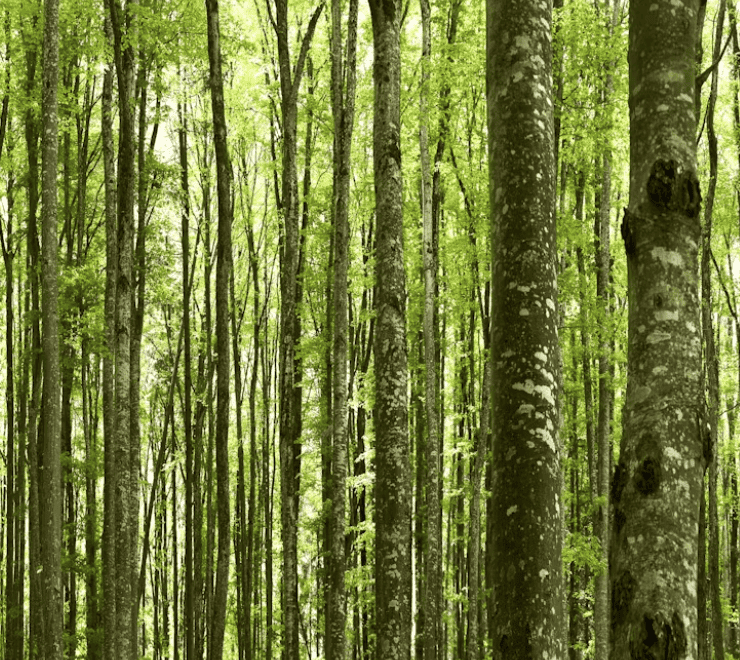It is clear to anyone that we are living in a time where consumer consciousness and environmental sustainability are at the forefront of brand strategy. It turns out that, in response to changing moods regarding green topics, many innovative packaging solutions have emerged as a key differentiator in the market. These creative endeavours not only aim to reduce environmental impact but also enhance user experience, bolster brand perception, and introduce novel interactions between product and consumer. This article delves into some of the most inventive packaging solutions that blend aesthetics, functionality, and eco-consciousness.
Seed-Embedded Packaging Provides A Step Towards Greener Earth
Seed-embedded packaging represents a revolutionary approach in the packaging industry, turning waste into a resource. Made from biodegradable materials that contain seeds, this packaging invites consumers to plant it after use. This not only aids in waste reduction but also encourages the cultivation of green spaces. Such packaging transforms the end of a product’s lifecycle into a beginning, fostering a deeper connection between consumers and the environment.
Edible Packaging Can Reduce Waste Deliciously
Edible packaging offers an ingenious solution to the pervasive problem of packaging waste. Crafted from food-grade materials, this type of packaging can be consumed along with the product it houses. From edible water bottles made from seaweed extract to wrappers made from rice paper, edible packaging presents a novel and enjoyable way to minimise environmental impact while indulging in culinary delights.
Plantable Packaging Is Sowing Seeds of Sustainability
Similar to seed-embedded options, plantable packaging takes eco-friendly packaging a step further. Designed to be planted directly into the soil, this packaging dissolves, leaving behind seeds to grow. This method not only eliminates waste but also promotes biodiversity and contributes to the restoration of ecosystems.
Water-Soluble Packaging Offers A Clear Solution to Pollution
Water-soluble packaging dissolves upon contact with water, leaving no residue behind. This non-toxic solution is particularly effective for single-use items, significantly reducing waste in environments such as hotels and restaurants. By incorporating materials that vanish into the environment harmlessly, water-soluble packaging marks a significant step towards sustainable consumption.
Mushroom Packaging Harnesses Nature’s Cushion
Mushroom packaging utilises mycelium, the root structure of mushrooms, to create biodegradable and sustainable packaging. Grown around a mould that fits the product, this packaging provides excellent protection for fragile items while ensuring that the end of its life is as eco-friendly as its beginning. Mushroom packaging showcases the potential of biomaterials in achieving circular economy goals.
Origami Packaging Pushes The Boundaries of Sustainability
Drawing inspiration from the ancient Japanese art of paper folding, origami packaging eliminates the need for adhesives by designing packages that fold into themselves. This minimalist approach not only reduces material usage but also offers a unique unboxing experience, merging tradition with innovation.
Dual-Purpose Packaging Is Thinking Outside (And Beyond) the Box
Dual-purpose packaging is designed with a secondary use in mind, transforming packaging waste into useful items. From containers that become hangers to boxes repurposed as toys, this concept extends the lifecycle of packaging materials, offering consumers added value and reducing the overall environmental footprint.
Thermochromic Packaging Engages Consumers Through Temperature
Thermochromic packaging changes colour with temperature variations, adding an interactive element to the consumer experience. This technology can indicate the freshness of food or the ideal consumption temperature, making it a valuable tool for enhancing product safety and enjoyment.
Compostable Bioplastics Offer A Greener Alternative
Compostable bioplastics, made from renewable resources like corn starch or sugarcane, represent a sustainable alternative to traditional plastics. These materials break down in industrial composting facilities, reducing dependency on fossil fuels and mitigating plastic pollution. We can supply a range of environmentally friendly shrink wrap materials to customers who want to choose a greener packaging option.
Interactive Packaging Opens Up A Digital Connection
Interactive packaging incorporates technology such as QR codes, augmented reality, or NFC chips to engage consumers with additional content, from product information to immersive brand experiences. This blend of digital and physical interaction opens new avenues for consumer engagement and brand loyalty.
Conclusion
The packaging industry is undergoing a transformation, driven by the dual forces of innovation and sustainability. The solutions discussed herein not only address environmental concerns but also enhance the consumer experience, offering new ways to interact with, enjoy, and dispose of packaging. As brands continue to explore and adopt these inventive solutions, the future of packaging looks promising, marked by creativity, functionality, and a deepened commitment to sustainability. This shift towards innovative packaging underscores the importance of design thinking in solving some of today’s most pressing environmental challenges, paving the way for a more sustainable and engaging consumer landscape.


